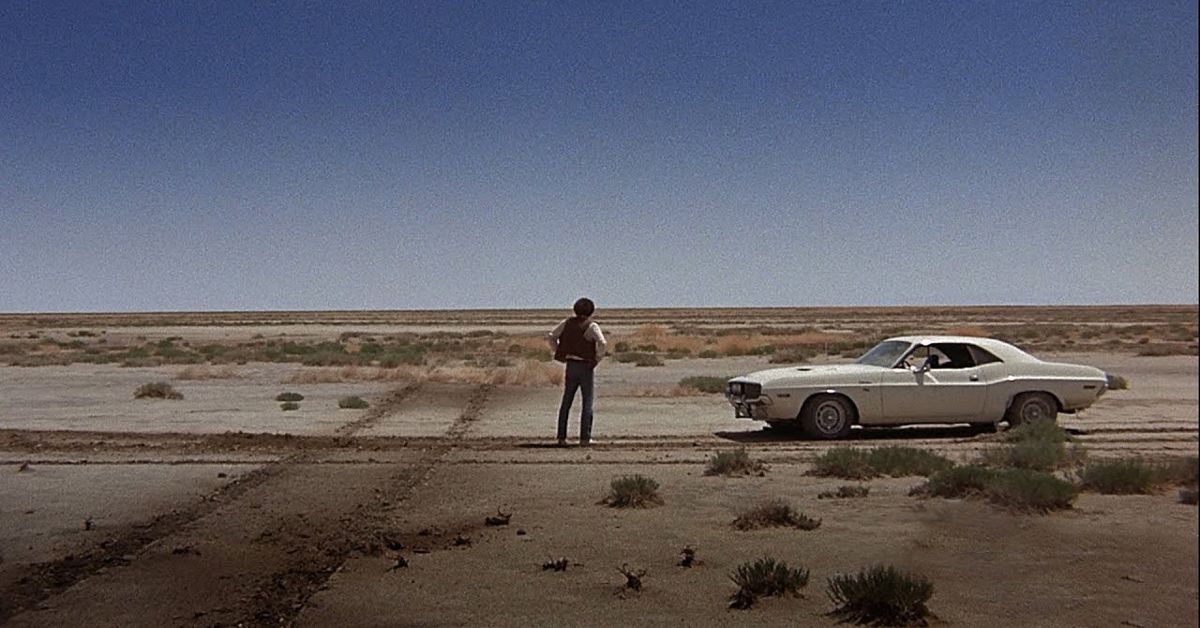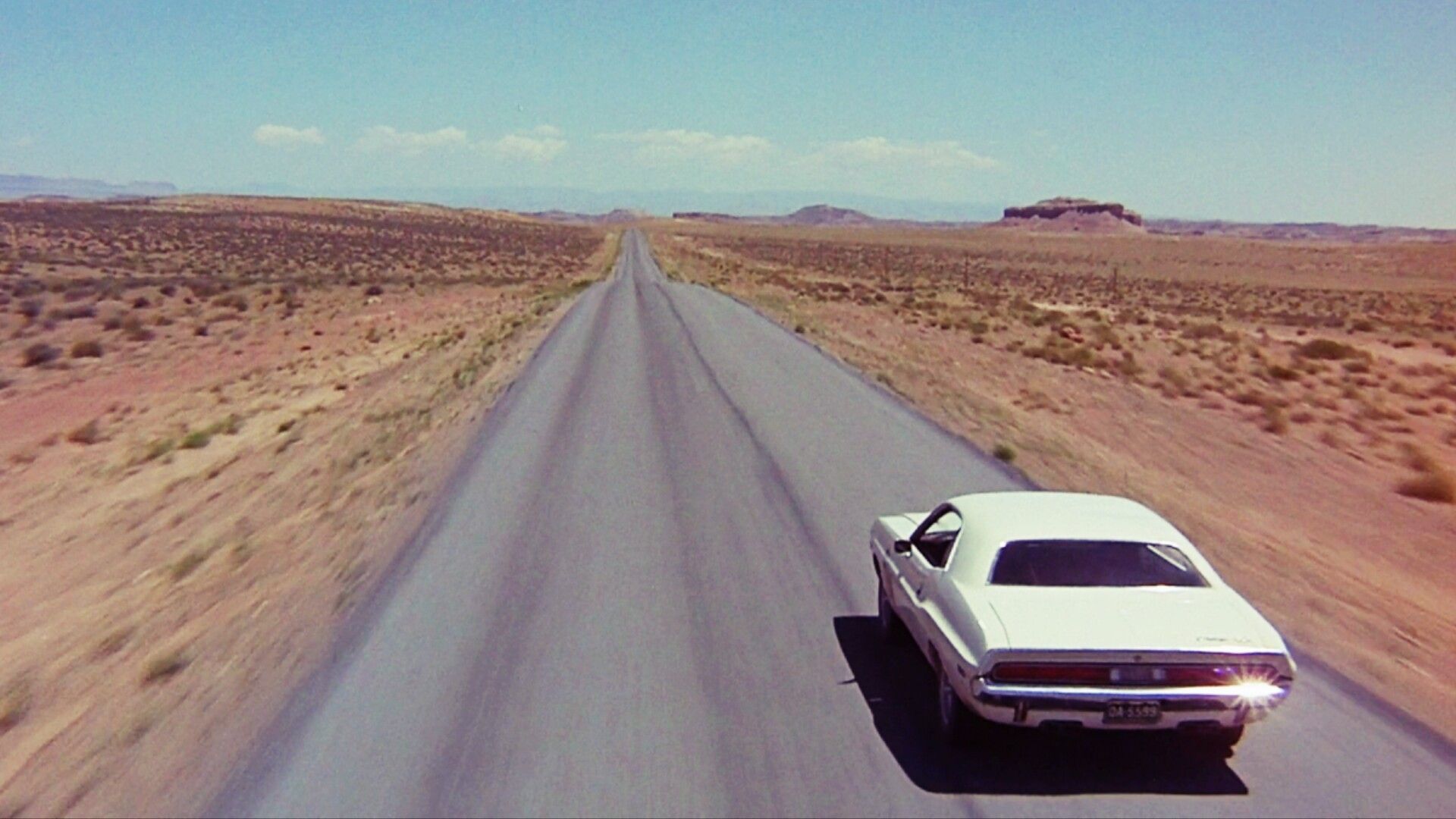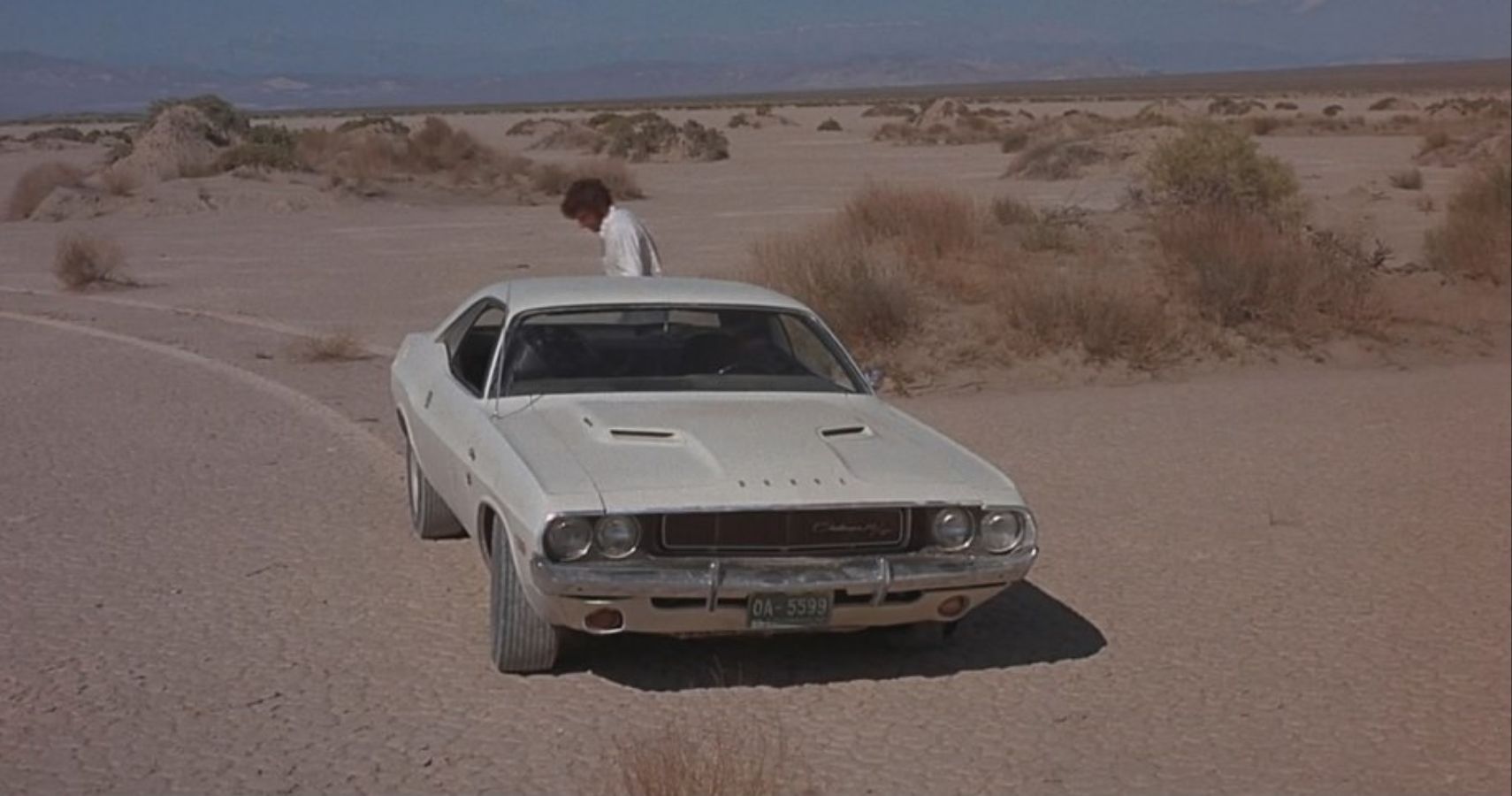Vanishing Point remains a cult classic and is hailed for its intense, realistic car chases that extend throughout the entire film. The iconic, white Dodge Challenger driven by its main character, known only as "Kowalski," has become one of the most revered cars in cinematic history. Its overall plot is as obscure as the film itself; Kowalski, played by Barry Newman, is a former racer and delivery driver for hire tasked with transporting a 1970 Dodge Challenger RT/SE from Denver to San Francisco.
An avid amphetamine user, Kowalski swiftly makes a bet with his drug dealer that he can conquer the distance in only 15 hours. The ensuing chaos involved spectacular stunt driving, a police chase spanning four states, drug use, a nude woman on a motorcycle, a psychic, blind disc jockey, an odd group of snake worshipers, and much more.
How Vanishing Point Came To Be
Cuban writer Guillermo Cabrera Infante created the script for Vanishing Point in the late 1960s. Infante had read a news article depicting a high-speed police chase, where the suspect refused to stop and crashed into a police barrier, ultimately killing him. This served as the main inspiration behind his screenplay, which eventually found is way into the hands of director Richard C. Sarafian, who became highly interested in the project. Sarafian then pitched the film to an executive at 20th Century Fox, but strangely, was given the green-light on the condition that the main character, Kowalski, must die at the end of the film.
The filming of Vanishing Point started in the summer of 1970. Although the shoot was originally scheduled for 60 days, budget concerns caused this timeframe to be shortened to only 22 days. The nature of the plot necessitated a wide range of filming locations, spanning across four states. Altogether, Vanishing Point was filmed on location throughout Colorado, Utah, Nevada, and California. Famed stunt driver Carey Loftin was hired to perform the majority of the film's intense chase scenes, and his prowess is quite evident in the movie. In addition to Vanishing Point, Loftin also coordinated stunts and drove for some of the greatest cinematic car chases of all time, including Bullitt, The French Connection, Smokey and the Bandit, Duel, and Christine, just to name a few.
The History Of The Vanishing Point Challenger
When Vanishing Point was being developed, 20th Century Fox had struck a deal with Chrysler to acquire vehicles for promotional purposes. During this time, Chrysler was known for renting out new models to film and television studios for the low sum of $1 each day, which had made them quite popular in the entertainment industry. In return, Chrysler would see their cars being advertised in major productions at minimal cost. The 1970 Dodge Challenger RT/SE had been selected specifically by stuntman Carey Loftin, who'd felt that the new model was likely the best car to handle the abuse of the arduous and grueling stunt schedule. It's seemingly unclear how many Challengers were used for filming. Director Richard C. Sarafian claimed that eight cars were used, but in a 1986 interview for Musclecar Review, both Loftin and actor Barry Newman had both stated that only five Challengers were used during production.
Despite rumors of Hemi-powered versions, the majority of the Challengers were equipped with Chrysler's U-code 440ci Magnum and four-barrel carburetors. A lone 383ci-powered car was also recruited for the film, although this car utilized Chrysler's Torqueflite transmission, whereas the 440-powered units carried A-833 4-speed manuals. All of these cars were left unmodified, save for the addition of heavy-duty shocks for a scene that called for a massive jump. Furthermore, each car had been painted the same shade of Alpine White. Although there's been much speculation on the meaning behind Kowalski's Challenger being painted white, in actuality, this decision was made solely to help the car stand out against the desert backdrops, where the vast majority of filming took place.
The Fate Of The Vanishing Point Challengers
During filming, the Challengers were subjected to rigorous punishment. These cars were sent airborne, driven over the desert floor at high speed, sent sliding across pavement, and generally abused at the hands of Carey Loftin and Barry Newman. On top of which, the antics carried on even after the cameras had stopped rolling. Actor Paul Koslo attested that, after filming was completed one night, Loftin found himself speeding down a highway in New Mexico at 145mph. Unbeknownst to Loftin, he'd passed a pair of state troopers, who promptly began chasing the white Dodge as it barreled across the desert. According to Koslo, Loftin had no idea he was even being pursued, then charged onward for several miles while the troopers struggled to match his pace. Eventually, Loftin pulled into a gas station and executed a spin that positioned the gas tank directly in front of one of the pumps. He was quickly arrested when the troopers finally arrived, although one of the producers managed to convince the police that Loftin was merely testing the car.
As the high-speed escapades continued, they took their toll upon the Challengers. Legendary Californian road racer Max Balchowsky had been tasked as the main mechanic for the film's production. As the damage ensued, Balchowsky was repeatedly forced to swap parts between cars to keep them running for various scenes. By the end of filming, only one Challenger was left in running condition. Once filming was completed, the cars were then returned to Chrysler, per the original arrangement. According to Sarafian, Chrysler's employees then became "pissed because their cars were in a movie that promoted drugs and running from the cops". As a result, all the cars were consequently crushed by the manufacturer. Even so, there remain rumors that the Challengers were instead sold off via a salvage auction. Though, were this to be true, it would be impossible to discover if any survive today, as no VIN numbers were ever recorded.

-Vanishing-Points-White-1970-Dodge-Challenger-RT-Via-IMDb.jpg)


